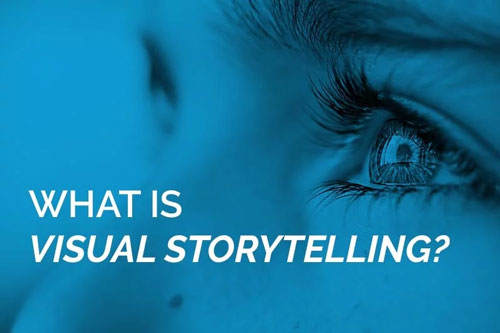
Graphic designers today face more competition than ever before. It’s important to use any tactic that you can to make your work stand out from the crowd. Visual storytelling offers an effective way to unite the disparate parts of your designs into a coherent narrative which grasps the viewer’s attention and which can subtly but effectively lead them to a conversion point.
By learning how to integrate this method into your designs, your designs can gain more attention and can be more effective in converting visitors into leads.
What is Visual Storytelling?
Visual storytelling refers to a method of bringing thematic uniformity to graphic design. Building different elements of your design around a single narrative, you can create a coherent message which the visitor can take away from the design.
Visual storytelling has become an important part of many popular social media campaigns, websites, infographics and even logos. Patagonia famously uses this to market themselves as a lifestyle brand, with many of the advertisements featuring average people scaling mountains, jumping off boats into the oceans and hiking in forests.
Related: How to Make Your Brand More Human
Why Visual Storytelling Gives Your Marketing Efforts an Edge
Visual storytelling should be a central component of your marketing strategy in order to gain clients and outperform competitors.
Visuals Are More Memorable Than Words
Images can stimulate us on a primal level and can garner an immediate response. Hubspot reports that Twitter posts with images are 150% more likely to receive a retweet, while Facebook posts with images are 2.3 times more likely to be liked, shared or commented on.
Visual storytelling allows you to easily create an emotional connection with your audience by focusing on images that resonate with them. You can even integrate user-generated content with candid shots into your storytelling rather than staged scenes with models to create a closer connection with customers.
Related: 4 Branding Mistakes That Are Killing Your Company Image
You Can Combine Images AND Words in Your Marketing Strategy
While images should be central to visual storytelling, you can also successfully integrate text to provide more context for your images. Airbnb famously integrates user stories with their pictures from locations all over the world to create a compelling brand. Long-form captions are well-adapted to visual storytelling’s immersive approach. However, you will still want the 140 characters to form a compelling introduction in order to grab attention over social media.
Meaning Is Left to Interpretation
You can also use images to challenge your audience. A dramatic image with few or no words invites the reader to think about the image and unpack its meaning on their own, making for a more memorable experience than simply reading and forgetting the message you want them to receive.
Related: Don’t Stop at the Logo: 5 Great Types of Non-Visual Branding
No One Else Is Doing It
Part of the effectiveness of visual storytelling is due to its novelty. Relatively few designers and brands are currently using it, which means you can instantly set yourself apart from other designers if you adopt it. Whatever you choose to do, continue to experiment with images, text and layout until you find designs that are effectively gain the attention of viewers.
Related: 6 Business Card Printing methods to Inspire Your Branding Strategy
Visual storytelling can be a unique and powerful tool for designers looking to raise their profile among potential clients and to set themselves apart from competitors. It offers a wide range of possibilities for customer interaction and can create an immersive experience for visitors.


